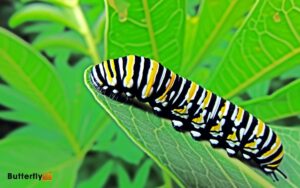Monarch Butterfly Caterpillar for Sale
Acquiring Monarch butterfly caterpillars is beneficial for biodiversity conservation and ecological education. Reputable suppliers, including Monarch Watch and certified breeders, should be identified to guarantee healthy and ethically sourced specimens.
Proper care involves maintaining a clean enclosure, regulating temperature, providing hydration through misting, and supplying fresh milkweed leaves. Observing the stages of metamorphosis, from 'J' shape formation to chrysalis development, reveals intricate cellular and biochemical processes.
Furthermore, educational projects can document life cycles and environmental impacts on Monarch populations, enhancing understanding of genetic and ecological principles. There are additional valuable aspects to contemplate.
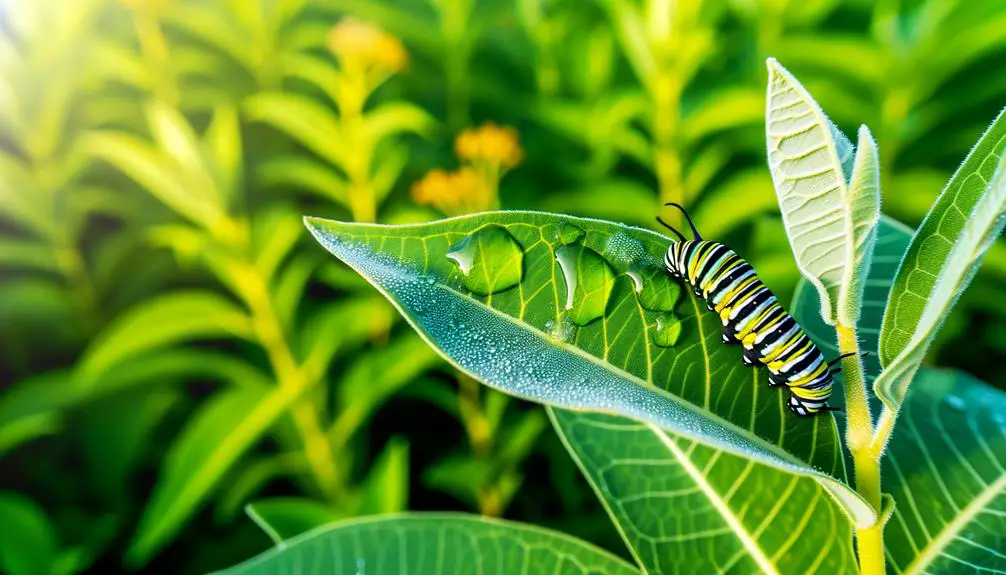
Key Takeaways
- Purchase healthy, ethically sourced caterpillars from reputable suppliers.
- Consider specialized entomological suppliers and certified butterfly breeders.
- Explore Monarch Watch and local nurseries for controlled specimens.
- Verify supplier credentials and request health certificates.
Benefits of Raising Monarchs
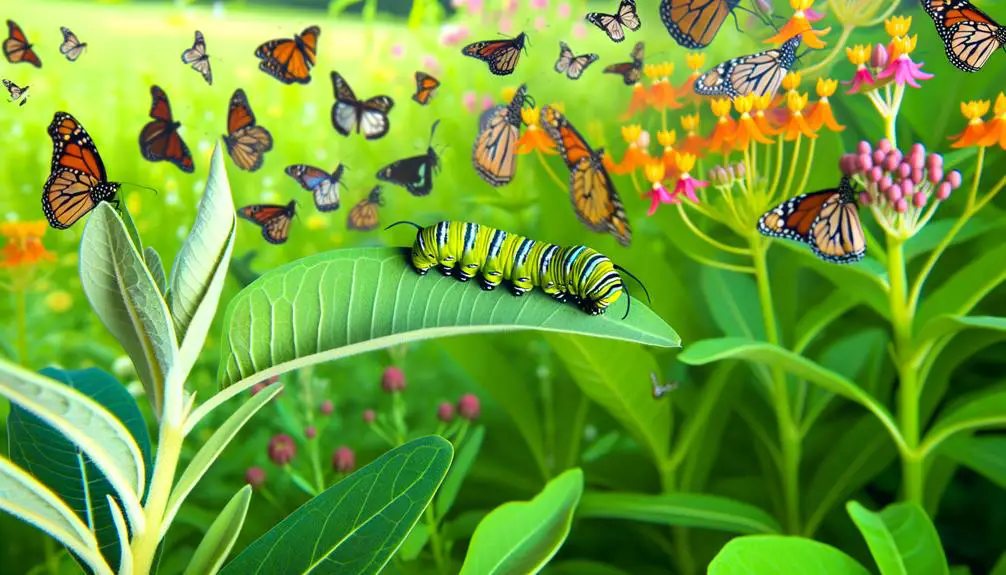
Raising Monarch butterflies offers numerous ecological and educational benefits, including the promotion of biodiversity and the opportunity for detailed observation of metamorphic processes.
By cultivating these lepidopterans, one contributes to the conservation of a species facing habitat destruction and climate change threats. Monarchs, known for their migratory behavior, play a pivotal role in pollination, thereby enhancing plant genetic diversity.
Additionally, rearing these butterflies provides an invaluable educational experience, allowing for in-depth study of their life cycle—from oviposition to eclosion. This hands-on involvement in their development fosters a deeper understanding of entomological principles and ecological interdependencies.
Engaging in Monarch rearing consequently empowers individuals to actively participate in conservation efforts and ecological education, fostering a greater appreciation for biological diversity.
Where to Buy Caterpillars
When seeking to procure Monarch butterfly caterpillars, it is essential to identify reputable suppliers who provide healthy and ethically sourced specimens. Prominent sources include specialized entomological suppliers, certified butterfly breeders, and recognized conservation organizations.
Websites like Monarch Watch and local nurseries often provide caterpillars raised under controlled conditions, ensuring genetic diversity and minimizing disease transmission. Additionally, academic institutions sometimes offer caterpillars for educational purposes.
Ensuring the provenance of caterpillars is critical; it supports ecological balance and contributes to conservation efforts. Prospective buyers should verify supplier credentials, request health certificates, and inquire about rearing practices.
How to Care for Caterpillars
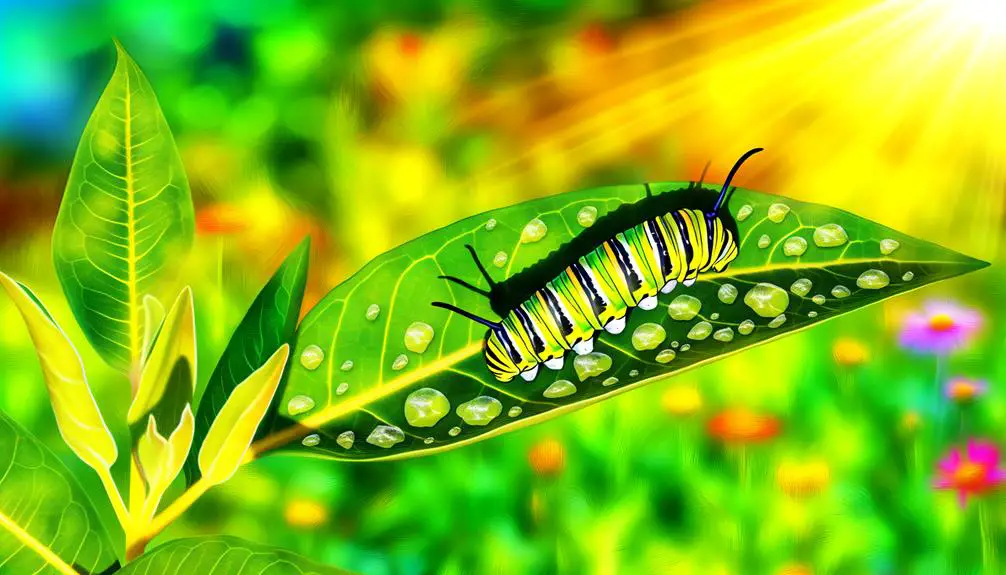
To guarantee the healthy development of Monarch butterfly caterpillars, it is imperative to provide them with a consistent supply of fresh milkweed leaves, their primary food source. Proper care involves the following steps:
- Habitat Maintenance: Maintain a clean, spacious enclosure to prevent overcrowding and reduce the risk of disease.
- Temperature Regulation: Keep an ambient temperature between 70-85°F, as extreme temperatures can impede growth.
- Hydration: Although they primarily derive moisture from milkweed, occasional misting can help maintain adequate humidity.
- Monitoring Health: Regularly inspect caterpillars for signs of illness or parasites, promptly removing any affected individuals to prevent contamination.
These meticulous care practices will foster the ideal growth and development of Monarch butterfly caterpillars, safeguarding their successful progression to the next life stage.
Observing the Metamorphosis
During the pupation phase, meticulous observation of the Monarch caterpillar's shift into a chrysalis is essential for understanding the intricate processes of metamorphosis.
Initially, the caterpillar anchors itself via a silk pad and adopts a 'J' shape, indicating impending pupation. Within hours, the exoskeleton splits, revealing the jade-green chrysalis beneath.
This transformation is marked by cellular reorganization and biochemical processes that dismantle larval structures while forming adult features. The chrysalis undergoes gradual morphological changes, including the appearance of gold speckles and wing patterns.
Observers should note the duration, environmental conditions, and any aberrations in development, as these factors influence the successful emergence of the adult butterfly.
Such detailed scrutiny fosters a deeper appreciation of metamorphic intricacy and biological freedom.
Educational Uses and Projects
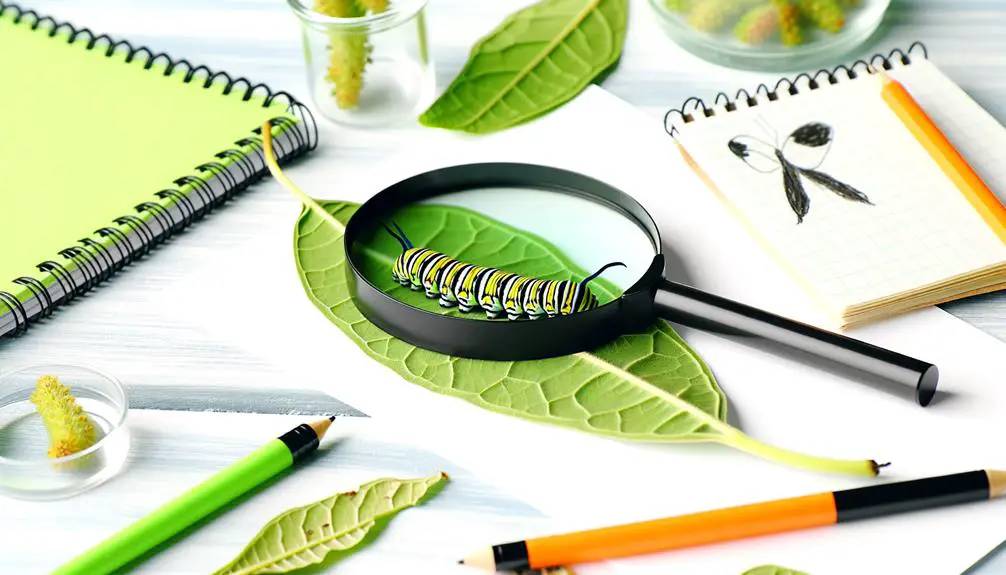
Integrating Monarch butterfly caterpillars into educational projects offers a unique, hands-on opportunity for students to observe and analyze biological processes such as growth, development, and metamorphosis. This approach facilitates experiential learning and fosters a deeper understanding of entomology and ecology.
Key educational uses include:
- Life Cycle Studies: Students can document each stage of metamorphosis, from egg to adult butterfly.
- Ecological Impact Assessments: Learners can examine how environmental factors affect Monarch populations.
- Genetic Studies: Observing genetic variations and traits within caterpillar populations can provide insights into heredity and evolution.
- Conservation Projects: Engaging in efforts to raise and release Monarchs promotes awareness of biodiversity and conservation.
This hands-on methodology empowers students to connect theoretical knowledge with real-world applications.
Conclusion
Raising monarch butterfly caterpillars offers multifaceted educational and ecological benefits, serving both scientific inquiry and biodiversity preservation.
Procuring caterpillars from reputable sources guarantees ethical and healthy rearing. Proper care, including habitat maintenance and nutritional provisions, promotes successful metamorphosis.
Observing this transformative process provides valuable insights into developmental biology. Furthermore, monarch rearing projects are as good as gold for educational settings, fostering an understanding of life cycles and environmental stewardship.
Consequently, the endeavor markedly enriches both knowledge and conservation efforts.






